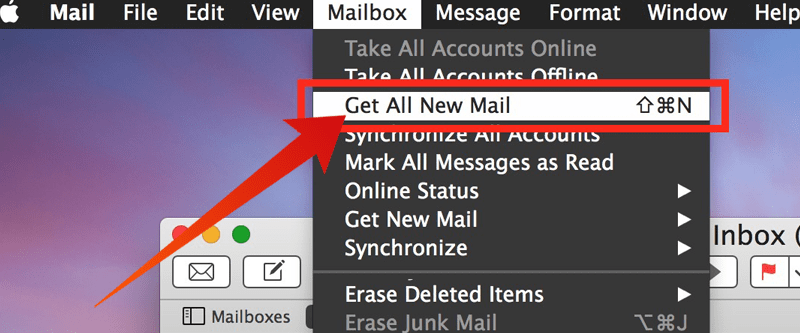February 16th, 2016 a judge ordered Apple to break into the phone's encryption using special software to be developed by Apple. The iPhone 5c in question was running iOS 9 and did not have all of. With FileVault 2, your data is safe and secure — even if your Mac falls into the wrong hands. FileVault 2 encrypts the entire drive on your Mac, protecting your data with XTS-AES 128 encryption. And on Mac systems with an Apple T2 Security Chip, FileVault 2 keys are created and protected by the Secure Enclave for even more security. Each one emits a constantly changing key that nearby Apple devices use to encrypt and upload your geolocation data, such that only the other Apple device you own possesses the key to decrypt those. To view the front app but hide all other apps, press Option-Command-H. Command-M: Minimize the front window to the Dock. To minimize all windows of the front app, press Option-Command-M. Command-O: Open the selected item, or open a dialog to select a file to open. Command-P: Print the current document. Command-S: Save the current document. Encrypto is a free, easy-to-use app that lets you encrypt files with AES-256 encryption and then send them to friends or coworkers. It works on both Mac and Windows, so you can send encrypted files without worrying whether the other person can open it or not. Protect Files with AES-256 Encryption T. How to format an SD card on your Mac; Use Finder to encrypt USB drives on MacBook. As of macOS Mojave, you can easily encrypt and decrypt generic mass storage devices on-the-go using Finder. This uses XTS-AES encryption, which is the same type of encryption that the macOS FileVault 2 system uses.
Apple yesterday removed Boom the Encryption Keyboard, an app that allowed Chinese internet users to bypass censorship, from the China app store, according to its developer.
Wang Huiyu, a New York-based Chinese citizen in his 20s, told Quartz that he developed Boom together with one of his university classmates during the outbreak of the coronavirus. Part of the motivation for Wang to develop the app, which went live on Feb. 15, was to offer people a chance to counter rigid online surveillance, and to provide them with an entertaining private messaging app.
According to an email sent by Apple to Wang, the app was removed because it contained “content that is illegal in China.” The app is still available in other regions, including Hong Kong, he said.
“I designed the app because I wanted to remind people of the importance of privacy, and my target customers are people born after 1995 or 2000. I feel those under 20 will be able to accept new things and ideas the fastest,” said Wang.
Boom encrypts text, both in Chinese and English, by turning them into emoji or Japanese or Korean characters, as well as rearranging lines of text in random order. The receivers of such messages can decrypt them by copying the emoji or characters using the app, with the original text then displayed automatically on the keyboard’s interface. As China’s blanket online censorship relies heavily on the detection of key words or even pictures containing sensitive words, apps like Boom can help users avoid such scrutiny.

Another app developed by Wang, which offered animated wallpapers featuring political figures including former Chinese leader Jiang Zemin, was also removed (link in Chinese) from Apple’s mainland China app store on the same day as Boom, he said.
Apple has removed apps from its China app store in the past for containing ”illegal content.” Among the apps that have been pulled were Quartz’s news app, which was removed from the China app store last year.
Apple did not immediately reply to a request for comment.
While most apps that enable encrypted messages and communications have long been banned in China, Wang said he suspects Boom drew the attention of authorities because of the way Chinese internet users quickly moved to preserve a particular coronavirus-linked article from being scrubbed by censors recently.
The article in question is an interview with Ai Fen, a Wuhan doctor who said she was reprimanded for alerting other people about the novel coronavirus. The article, published on March 10 by China’s Ren Wu magazine, was deleted within hours of its publication. Various versions of the article, including those reproduced in emoji, English, and even Hebrew, emerged after the deletion as people scrambled to save Ai’s story, part of a broader wave of efforts by internet users in China to prevent censors from removing crucial stories and memories related to the epidemic. Wang said downloads of Boom from mainland China surged after the incident.
Apple has been repeatedly accused of bowing to China by removing apps, such as a Hong Kong live map app that allowed protesters to crowdsource police movements during last year’s protests in the city.
We design Mac hardware and software with advanced technologies that work together to run apps more securely, protect your data, and help keep you safe on the web. And with macOS Big Sur available as a free upgrade, it’s easy to get the most secure version of macOS for your Mac.*
Apple M1 chip.
A shared architecture for security.

The Apple M1 chip with built-in Secure Enclave brings the same powerful security capabilities of iPhone to Mac — protecting your login password, automatically encrypting your data, and powering file-level encryption so you stay safe. And the Apple M1 chip keeps macOS secure while it’s running, just as iOS has protected iPhone for years.
Apple helps you keep your Mac secure with software updates.
Mac Encryption App
The best way to keep your Mac secure is to run the latest software. When new updates are available, macOS sends you a notification — or you can opt in to have updates installed automatically when your Mac is not in use. macOS checks for new updates every day and starts applying them in the background, so it’s easier and faster than ever to always have the latest and safest version.
Protection starts at the core.
The technically sophisticated runtime protections in macOS work at the very core of your Mac to keep your system safe from malware. This starts with state-of-the-art antivirus software built in to block and remove malware. Technologies like XD (execute disable), ASLR (address space layout randomization), and SIP (system integrity protection) make it difficult for malware to do harm, and they ensure that processes with root permission cannot change critical system files.
Download apps safely from the Mac App Store. And the internet.
Now apps from both the App Store and the internet can be installed worry-free. App Review makes sure each app in the App Store is reviewed before it’s accepted. Gatekeeper on your Mac ensures that all apps from the internet have already been checked by Apple for known malicious code — before you run them the first time. If there’s ever a problem with an app, Apple can quickly stop new installations and even block the app from launching again.
Stay in control of what data apps can access.
Apps need your permission to access files in your Documents, Downloads, and Desktop folders as well as in iCloud Drive and external volumes. And you’ll be prompted before any app can access the camera or mic, capture keyboard activity, or take a photo or video of your screen.
FileVault 2 encrypts your data.

With FileVault 2, your data is safe and secure — even if your Mac falls into the wrong hands. FileVault 2 encrypts the entire drive on your Mac, protecting your data with XTS-AES 128 encryption. Mac computers built on the Apple M1 chip take data protection even further by using dedicated hardware to protect your login password and enabling file-level encryption, which developers can take advantage of — just as on iPhone.
Designed to protect your privacy.
Online privacy isn’t just something you should hope for — it’s something you should expect. That’s why Safari comes with powerful privacy protection technology built in, including Intelligent Tracking Prevention that identifies trackers and helps prevent them from profiling or following you across the web. A new weekly Privacy Report on your start page shows how Safari protects you as you browse over time. Or click the Privacy Report button in your Safari toolbar for an instant snapshot of the cross-site trackers Safari is actively preventing on that web page.
Automatic protections from intruders.
Safari uses iCloud Keychain to securely store your passwords across all your devices. If it ever detects a security concern, Password Monitoring will alert you. Safari also prevents suspicious websites from loading and warns you if they’re detected. And because it runs web pages in separate processes, any harmful code is confined to a single browser tab and can’t crash the whole browser or access your data.
Find your missing Mac with Find My.
The Find My app can help you locate a missing Mac — even if it’s offline or sleeping — by sending out Bluetooth signals that can be detected by nearby Apple devices. These devices then relay the detected location of your Mac to iCloud so you can locate it. It’s all anonymous and encrypted end-to-end so no one — including Apple — knows the identity of any reporting device or the location of your Mac. And it all happens silently using tiny bits of data that piggyback on existing network traffic. So there’s no need to worry about your battery life, your data usage, or your privacy being compromised.
Keep your Mac safe.
Even if it’s in the wrong hands.
All Mac systems built on the Apple M1 chip or with the Apple T2 Security Chip support Activation Lock, just like your iPhone or iPad. So if your Mac is ever misplaced or lost, the only person who can erase and reactivate it is you.